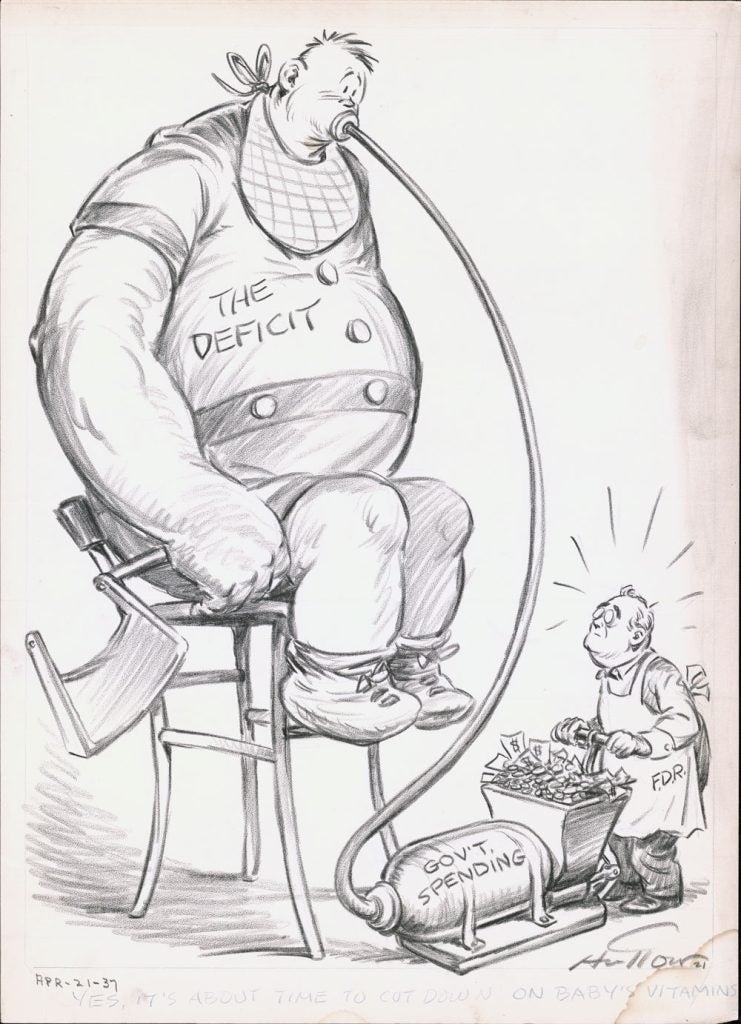
“Yes, It’s About Time to Cut Down on Baby’s Vitamins” (April 21, 1937)
by Hugh McMillen Hutton (1897-1976)
12 x 18 in., ink and crayon on heavy board
Hugh M. Hutton (1897-1976) was an American editorial cartoonist who worked at the Philadelphia Inquirer for over 30 years.
Hugh Hutton grew up with an artistic mother. After attending the University of Minnesota for two years, Hutton enlisted in the armed forces and served in World War I. Hutton pursued coursework in art through correspondence school, the Minneapolis School of Art and the Art Students League.
He worked at the New York World from 1930 to 1932 and with the United Features Syndicate in 1932 and 1933, drawing illustrations and comic strips. Hutton relocated to Philadelphia and worked as the cartoonist at the Public Ledger in 1933 and 1934. He became the Philadelphia Inquirer’s editorial cartoonist in April 1934, where he stayed throughout his career, retiring in 1969.
A mistake was about to happen in 1937 that would be repeated.
In 1937, after five years of sustained economic growth and a steadily declining unemployment rate, the Roosevelt Administration began to worry more about possible inflation and the size of the federal deficit than the ability of the economy to sustain the recovery. Thus, the concern expressed in this cartoon.
As a consequence, in the fall of 1937, FDR supported those in his administration who advocated a reduction in federal expenditures (i.e. stimulus spending) and a balanced budget. The results — which included a massive reduction in the number of people employed by such programs as the WPA — were catastrophic. From the fall of 1937 to the summer of 1938, industrial production declined by 33 percent; wages by 35 percent; national income by 13 percent; and not surprisingly, the unemployment rate rose by roughly 5 percentage points, with an estimated 4 million workers losing their jobs.
The economic downturn caused by the decline in federal spending was commonly referred to as the “Roosevelt recession.” To counter it, FDR asked Congress in April of 1938 to support a substantial increase in federal spending and lending.
In July 2010, coming out of the Great Recession, there was a real danger that the reluctance of Congress to pass even the modest measures of new spending called for by the Obama administration to stall the recovery. The bail-outs, although successful in the end, let the banking leadership off pretty easily, and likely contributed to the right-shift and rise of populism in US politics.

